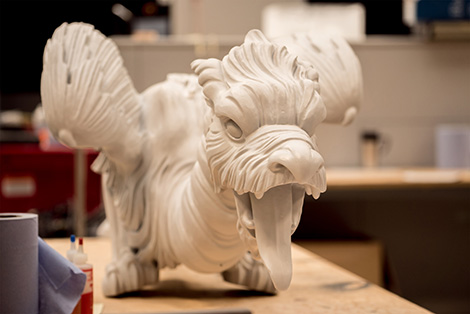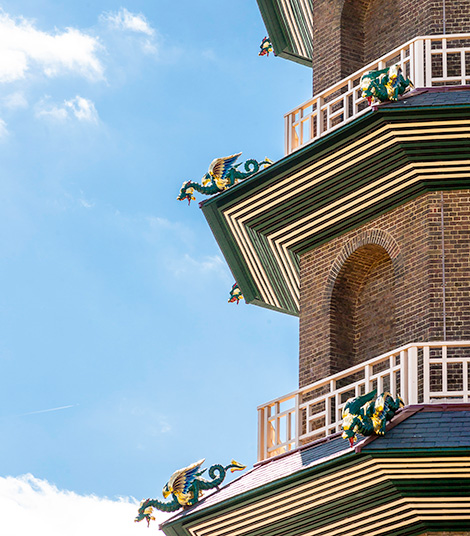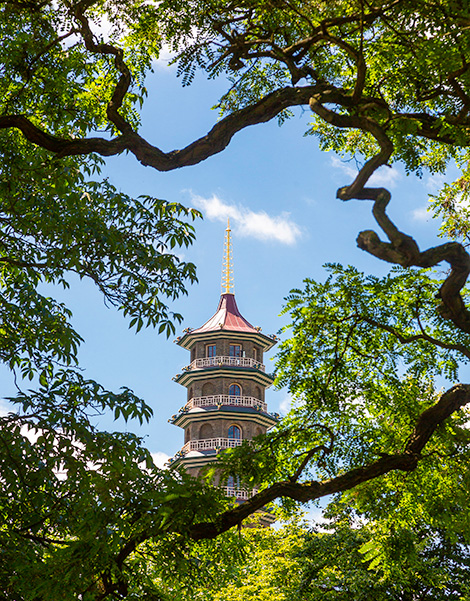
The Kew Gardens Great Pagoda stands at nearly 50 metres tall, acting as a Royal viewing platform for the entire gardens below
The Great Pagoda at Kew Gardens is not only a 250-year-old Royal Park landmark, UNESCO World Heritage site and visited by around 1.8M people annually, but it is also home to 80 dragons.
Commissioned in 1761 in the midst of the reign of King George III, some 20 years later the Pagoda’s dragons were removed during repairs to the roof and never replaced, until now.
Historic Royal Palaces needed to authentically replicate the dragons, but in a way that could withstand the famously inclement English weather, and not overload the towering building – turning to modern 3D digital technology.


3D Systems’ On Demand Manufacturing team, based in High Wycombe delivered lightweight, durable dragons – 3D scanning the designs of a master wood carver with a Faro Design ScanArm, and using its Geomagic Design X software, Selective Laser Sintering (SLS) 3D printing and a great deal of sympathetic high quality finishing.
The use of CAD enabled, innovative engineering solutions for the dragons, including hidden features to facilitate mounting them to the pagoda as well as a much lighter-weight, hollowed statue that is 60 per cent lighter than the wood alternative.
The significant weight reduction enabled by 3D printing means less stress is placed on the historic building, while the CAD data could be used to scale the dragons, producing them in a variety of sizes from 1150mm to 1850mm in length.
“We turned to 3D Systems to provide the rapid throughput, accurate details, and excellent finishing that was needed for this project,” Historic Royal Palaces project director Craig Hatto.
“The engineering skill of 3D Systems’ team, the opportunity to light-weight the dragon statues, and the material longevity of SLS 3D printing were key considerations for this project.”
Much was made by Historic Royal Palaces of the need to use technologies such as 3D printing in the right circumstances – in this case the durability and weight saving needed to maintain the historic building as a whole – while replacing other elements with like-for-like traditional techniques and materials (such as the wood-carved base dragons).

The dragons were printed on 3D Systems’ SLS machines in DuraForm PA, a polyamide 12 nylon material capable of producing a look and feel comparable to the original dragons.
Interestingly the Pagoda was designed by Sir William Chambers, who had studied oriental architecture in China, but he messed up when designing Kew’s pagoda.
Pagodas should have an odd number of floors, traditionally seven (rather than ten), believed to represent seven steps to heaven.
The Pagoda was also used as a base for product design testing during the Second World War. British bomb designers wanted to study their latest inventions in flight so made holes in each floor of the pagoda and dropped bombs down in secret to test their inventions. The repairs to the holes are still visible today.
The Great Pagoda at Kew opens to the public on 13 July 2018.






